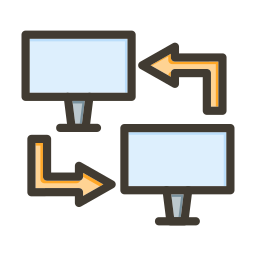
Understanding Media Converters in Network Hardware Components
Media converters are essential hardware devices used in networking environments to enable communication between different types of media, typically converting electrical signals to optical signals and vice versa. They serve as a bridge between copper-based Ethernet cables (such as twisted pair) and fiber optic cabling. By doing so, media converters extend the reach of a network, improve signal quality, and offer flexible connectivity between dissimilar media types without the need to replace existing infrastructure.
Media converters play a vital role in scenarios where fiber is necessary for long-distance transmission but the network devices only support copper interfaces. These devices are compact, reliable, and can be easily integrated into existing networks. Their design varies from standalone units to modular chassis-based systems that support multiple conversions within a single housing.
Key Applications of Media Converters
Extending network distance beyond the limitations of copper cables by converting signals to fiber
Connecting legacy copper-based equipment to modern fiber-optic backbone infrastructure
Enhancing bandwidth and reducing electromagnetic interference by utilizing fiber connections
Facilitating network upgrades while preserving existing hardware investments
Integrating remote devices such as IP cameras, wireless access points, or building management systems
Enabling secure and high-speed communication between buildings or across campuses
Supporting industrial environments where harsh conditions require robust, noise-resistant transmission
Types of Media Conversions
Copper to fiber and fiber to copper
Single-mode fiber to multimode fiber
Different fiber connector types and wavelengths
Ethernet speeds from Fast Ethernet to Gigabit and beyond
Media converters come in various configurations, including models that support SFP (Small Form-factor Pluggable) modules, allowing for even more flexibility depending on the type of fiber and connector required. Some media converters also include built-in features like link fault pass-through, auto-negotiation, and duplex mode settings, providing better control over network behavior and troubleshooting.
Cost and Accessibility
Media converters are commercially available hardware products, and their use is not free. The cost depends on several factors such as supported speed, media type, power options, manageability, environmental rating, and brand. Despite the cost, they are often considered a cost-effective solution for network extension and integration, particularly when compared to the alternative of replacing network equipment or re-cabling entire systems.
Benefits of Using Media Converters
Enables seamless integration between different network media
Extends network reach with minimal disruption
Reduces the need for expensive infrastructure replacement
Allows step-by-step upgrades from copper to fiber
Enhances signal quality and network reliability
Supports flexible network design and future scalability
Comparison with Alternative Solutions
Unlike network switches with built-in fiber ports, media converters offer a more targeted and often lower-cost solution for specific conversion needs
Compared to re-cabling with all-fiber infrastructure, media converters allow for phased upgrades without discarding existing copper-based equipment
They offer simpler deployment and lower maintenance than managed switches or routers in many point-to-point scenarios
Media converters are ideal for organizations with budget constraints or those needing to connect only a few fiber endpoints
Use Case Examples
A university campus connecting different buildings via fiber while maintaining copper-based switches in each building
A factory requiring noise-resistant connectivity from the control center to production lines
A data center expanding its backbone using fiber optics but continuing to use existing copper patch panels
A small business extending its network to a remote office where only fiber is available between locations
Conclusion
Media converters are highly valuable hardware components in the design and maintenance of modern network infrastructures. They provide a simple, reliable, and scalable way to connect different types of network media, especially when extending networks over long distances or upgrading to fiber-based solutions. While not free, the investment in media converters is often justified by the flexibility and cost savings they bring. By enabling the integration of existing copper-based equipment with newer fiber-optic technology, media converters support gradual, controlled, and efficient network evolution without the need for disruptive and expensive overhauls.












